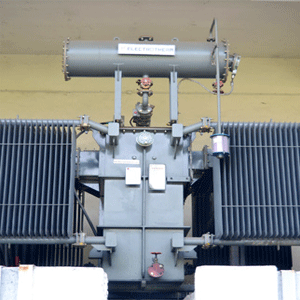
India being the fifth largest power producer in the world in terms of installed capacity, is calling for an increase in the power & distribution transformer market. The Indian Power & Distribution Transformers Market was valued at USD 2065.4 million in FY2020 and is anticipated to grow at a CAGR of over 6.89 percent in the next six years, owing to the growing demand for power due to the rapid increase in population, industrialization, and urbanization.
Thus, the transformer being the gateway for power transfer from utility to industry or domestic usages, is facing continuous growth on new installations and capacity augmentation. With a customer-focused approach for engineering innovation, Electrotherm has been an engineering metal melting company since 1983. In Electrotherm, R&D has been the core competency with a shared focus on developing and adopting technologies to customize customer needs, making it a key driver in the multi-divisional growth story.
"We are a known brand in the transformer manufacturing sector and are standing among top rank holders for last two decades in terms of reliability and efficiency. We fall under the preferred list of suppliers in many leading companies who run their process plants with ET make transformers. Repeat ordering is the symbol
we measure as customer feedback of our product performance", said Sanjib Mitra, Sr. V.P. Marketing (Transformer Division), Electrotherm.
Offers Wide Range of Customized Solutions to Customer's Specific Requirements
Nowadays, a client looks for reliable and efficient transformers because power loss in transformers is not only a commercial loss but a technical loss too. Greater power loss in a transformer leads to hot spots, leading to insulation failure resulting in break down or outages. To solve this, Electrotherm has been offering tailor-made solutions in selecting the voltage and current graph along with the varied frequency as per application duty of the connected load. Induction and arc furnace applications are some of the most critical and rugged tasks in the metal industry. Today ET makes transformers most successful in fulfilling the hot metal demand in the industry, catering to almost 70 percent of the industry market.
At Electrotherm each transformer is designed as per load requirement so that customers always get the best performance with minimum or zero maintenance. "Our design team has got huge experience in understanding the actual requirement of the product as per relevant specified duties by the customer. The right materials are used by our manufacturing & quality team to achieve the various design parameters which the product must deliver during actual operation at the site. Finally, customer witness of the transformer on load gives ultimate satisfaction", adds Sanjib Mitra, Sr. V.P. Marketing (Transformer Division).
Furthermore, Electrotherm can manufacture a wide range of transformers aggregating up to 4000 MVA per annum. Converter Duty, Furnace Duty, Rectifier Duty are among the special ones regularly manufactured by the company other than power and distribution transformers, including pre-fabricated compact substations. Also, the dedicated R&D team is working on the continuous development of an up-coming & new range of transformers that are primarily focused on low loss and highly efficient/ compact designs to facilitate industry needs.
Hence, Electrotherm wants to remain one of the most preferred partners for low industrial loss and special design transformers. Their state-of-the-art learning and development centers located in various parts of the country and abroad are regularly organizing technical training by industrial veterans, both on-site & off-site, to enhance the skillsets of the engineers. Through this training, the designers, process owners, and technicians can exchange and upgrade their knowledge which helps Electrotherm produce error-free and reliable products. Regarding capacity, at present, Electrotherm finds it challenging to meet the rising market demand with their existing plant and is, therefore, planning for expansion of the current facilities and to add new production lines to cater for a new range of transformers in railways and defence application.
We use cookies to ensure you get the best experience on our website. Read more...